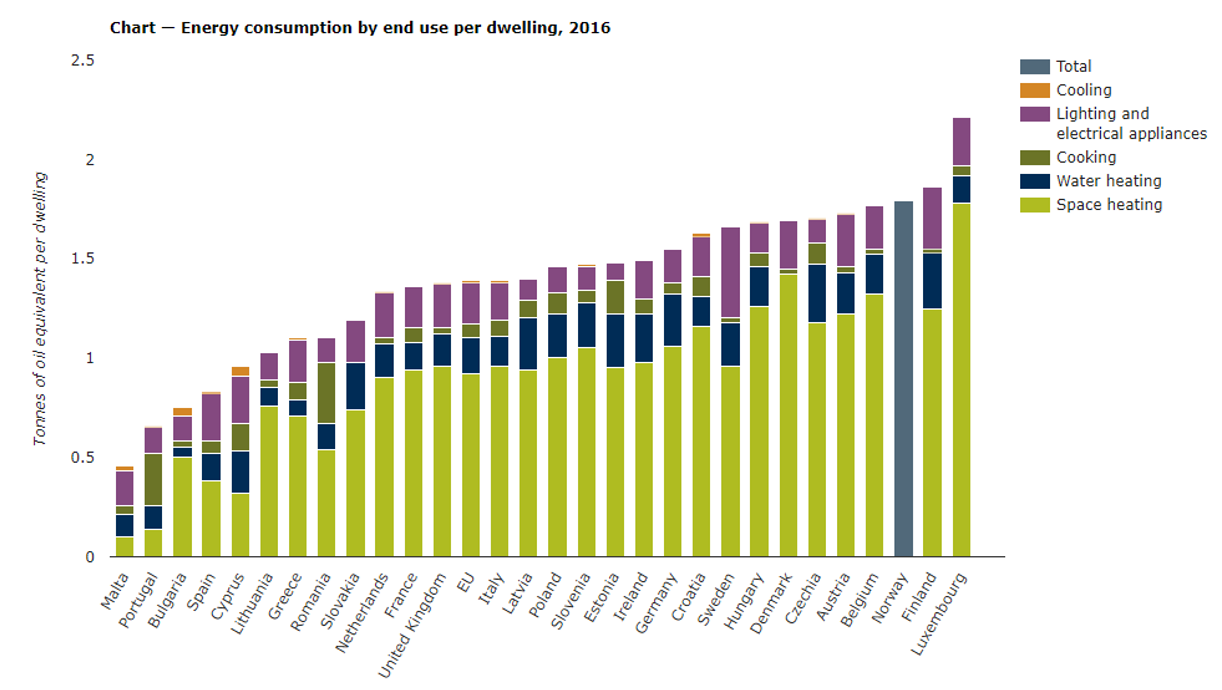Policies and status of Building Energy Efficiency in Europe
Energy
Energy efficiency in buildings is a key area of focus in Europe, as buildings are responsible for a significant portion of energy consumption and greenhouse gas emissions on the continent. The European Union has set a number of targets and policies aimed at improving the energy efficiency of buildings, including the Energy Performance of Buildings Directive (EPBD) and the Energy Efficiency Directive (EED). These policies set targets for the energy performance of new and existing buildings, as well as requirements for energy audits and the improvement of building energy performance.
Under the EED, the EU has set a target for its member states to improve the overall energy efficiency of their economies by 20% by 2020, compared to a business-as-usual scenario. This target is to be achieved through a combination of measures, including energy efficiency in buildings.
Specifically, the EED established a target for member states to improve the energy efficiency of their building stock by at least 3% per year, through the implementation of cost-effective energy savings measures. This is known as the "3% annual savings" target, which is mandatory for all EU member states. The target is calculated based on the energy consumption of the building stock in the base year (usually 2005 or the year of joining the EU) and is to be achieved by 2020.
In terms of progress towards these targets, there have been some successes in Europe, but also some challenges. On the positive side, the energy performance of new buildings has improved significantly in recent years, and many countries have implemented policies and financial incentives to encourage the retrofitting of existing buildings. However, the rate of retrofitting remains relatively low, and the overall energy performance of the building stock in Europe is still far from where it needs to be to meet the EU's long-term goals.
Overall, Europe is still behind its targets in terms of energy efficiency in buildings. The EU has set a target of reducing primary energy consumption from buildings by 38% by 2030, but currently, the rate of improvement is not enough to reach this target.
The graphic shows that energy consumption per dwelling is very different between European countries.
Source: EEA
